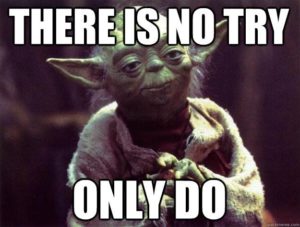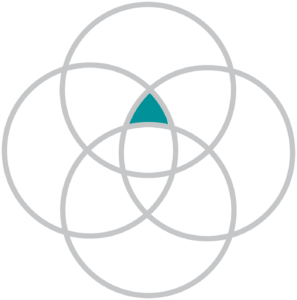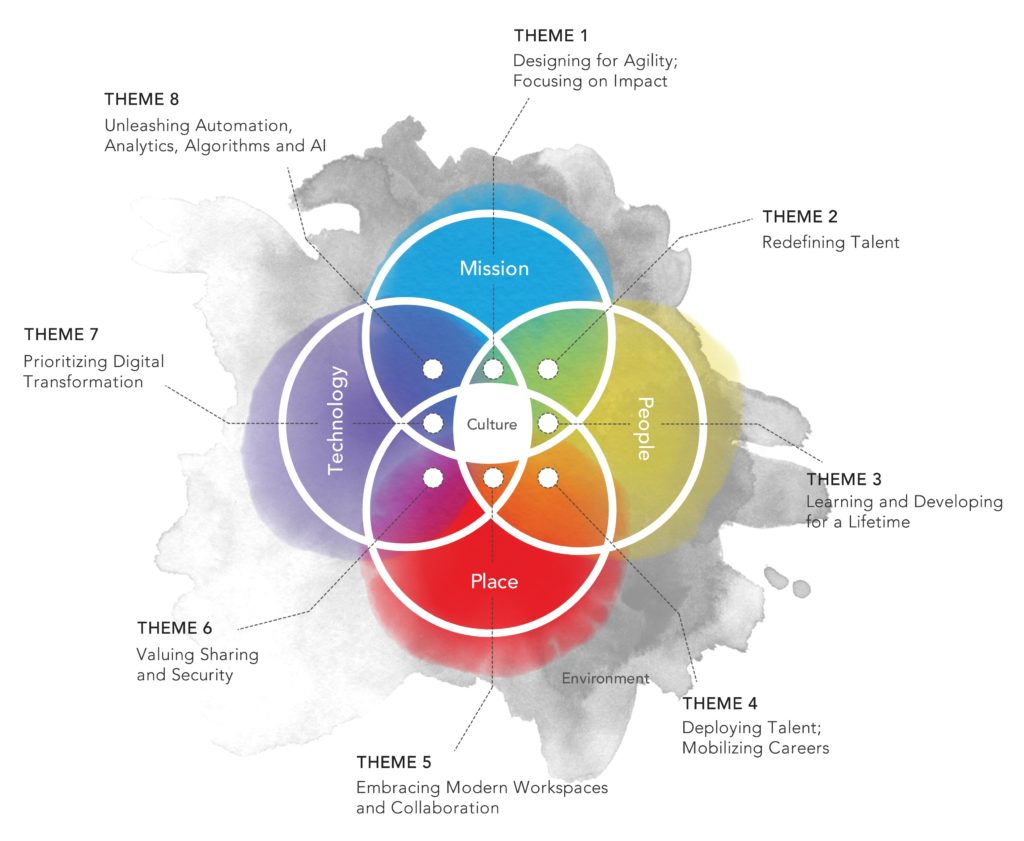At the intersection of technology, mission, and people is NASA’s need to continuously redesign how we accomplish our work while, at the same time, preserving our core values and ethos of what makes NASA uniquely NASA. Today’s complex, interconnected work environment – and the speed of the information age – requires a different approach to sustain organizational success. Organizations face the growing imperative to redesign themselves to move faster, adapt more quickly, facilitate rapid learning, and embrace the dynamic needs of an increasingly diverse workforce.
The intersection of these meta forces drives the necessity for organizations to restructure for flexibility and focus on identifying and growing impact. As organizations attempt to understand what is necessary to retain employees, they must restructure around the facilitation of rapid learning, embrace an increasingly diverse workforce, and anticipate ways to adapt to ever developing trends. With increasing complexity of work, individuals are beginning to strengthen multiple skills and collaboration is a necessity to accomplish an often-heavier workload. As NASA is constantly growing into an ever-more agile organization, flexibility allows teams to be assembled based on the nature of the work in an attempt to match “talent to task”.
NASA, like other organizations, must consider the repercussions of rigidity in their organization structure. As many departments in organizations are heavily segregated and siloed, this makes access to human capital and various resources a time-consuming and arduous task. Being able to create small teams across departments allows for increased collaboration and new ways of conceptualizing how organizations enable their workers to create teams based on selected strengths, weaknesses, and personality traits. With flexibility across organization structure comes the ability to adjust or modify to create impact. Through this fluidity in structure, purpose and insights are more easily identifiable.
There is also an increase in expectations for more work–life balance and wellness opportunities. To retain the best and brightest of employees, a change towards increased agility must be made among organizational structures, and must be made quickly. Those who do not choose to shift will ultimately be left behind without eyes on transforming their organizations.
NASA is crafting an agile workplace through a myriad of different tactics including creating employment opportunities around talent rather than seniority-based positions, providing resources for lifelong learning, cultivating an environment of decreased risk aversion, and avidly working towards the understanding and the adaption of generational differences.
Newly conceptualizing how work is accomplished at NASA requires an understanding of the work. With this understanding, NASA may construct a view of the current network and social architecture of the organization to explore the current structures, dynamics and overarching decision-making practices. This view is used to map teams to tasks, coinciding with the establishment of principles and practices for matrixing and collaborating to achieve designated goals. The success of team networks for NASA largely hinges on cataloging our peoples’ talent, crafting effective team engagement practices, leveraging top talent and rising leaders to guide team performance, and aligning performance outcomes to mission goals.
As such, organizations are shifting toward structures built for agility and a network of teams that have overarching goals tied to organizational performance and productivity. Agile organization designs foster autonomous teams able to engage in fluid work arrangements based on the nature of the work; organizations are afforded the ability to quickly mobilize “talent to task” to achieve mission success.
About the Author
Jenna Kay Foertsch is an intern at NASA’s Lyndon B. Johnson Space Center working in the Central Operations Directorate and is focused on data visualization and content strategy. Jenna Kay attends the University of Minnesota and will graduate in 2019 with a degree in Business and Marketing Education with an emphasis in Political Science. Jenna Kay is passionate about enabling culture change through an intersection of equality in STEAM, business, and policy. She participates in various startups, FIRST Robotics, and consuming mass amounts of cream cheese rangoons.



